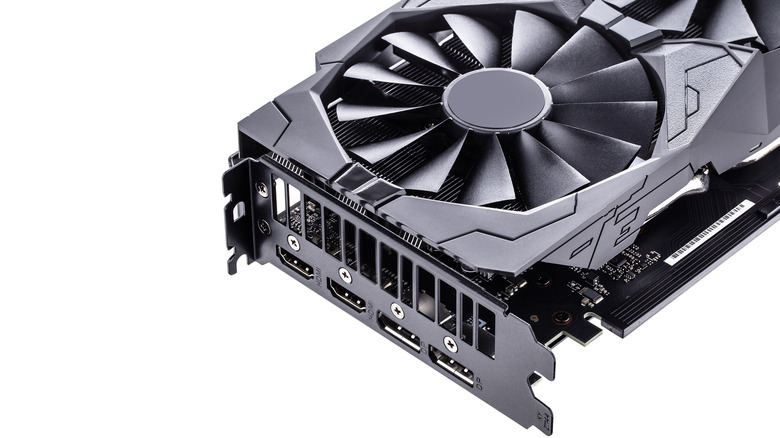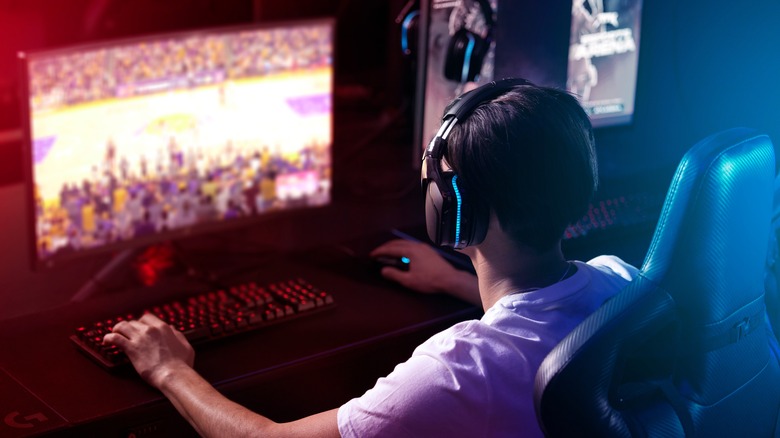What Is Screen Tearing And What Causes It?
If you play a lot of video games or otherwise keep them in your sphere of stuff you pay attention to, it's very likely you've at least heard the term "screen tearing" before, though this isn't a problem that affects only games. It always pops up in the context of complaints, unless someone's expressing relief that there isn't any screen tearing. What even is this phenomenon?
The broad strokes way to understand screen tearing is that it's a graphical glitch that distorts what you're seeing on screen — except rather than in-game oddities like textures that fail to load, the screen itself is what's affected. Sort of like viewing something through a cracked window, where everything on the other side looks fine, but what you see on either side of the crack doesn't line up like it should.
Screen tears come in different degrees of severity, and can appear anywhere from a fraction of a second to until the affected software or entire system is reset. At best, it's occasionally noticeable and sometimes irritating, but at worst it can significantly reduce your ability to play or work — and possibly hurt your eyes.
Why does screen tearing happen?
These visual offsets are most noticeable when playing video games with camera movement, particularly when swinging the camera around. They can be horizontal or vertical, completely separate the image across the tear, or create a blurring effect. Sometimes you may even see multiple tears on the screen at once.
One of the main causes of all this is a conflict between the monitor's refresh rate and the frame rate of whatever's happening on screen. However, it can also happen if the two values match, because when they're synced up, even a slight change can cause tears to appear. It's a somewhat delicate line to walk for games or dynamic programs to produce a smooth image.
It can also happen if you overclock your PC — particularly the GPU. Pushing it beyond its manufactured performance limits like that can lead to tears as the GPU struggles to keep up with something it may not actually be meant to handle.
How to fix or work around screen tearing
Dealing with screen tearing can be tricky at times, but not always. Sometimes all you need to do is check your GPU settings and make sure the monitor's resolution doesn't exceed the GPU's output resolution. You should also try changing the refresh rate of your display to its highest option.
There's also the not quite as common as "turn it off and back on" (but still quite common) troubleshooting approach of drivers. If the screen is tearing and adjusting the monitor settings doesn't help, you may need to update or even reset the graphics driver entirely. Especially if the problem appeared after a system update, which may imply a compatibility issue or installation error.
Software settings can contribute to tearing, too. Some games implement frame limits meant to avoid overtaxing the GPU. These frame rate limits can result in a mismatch with the refresh rate, so turning them off may get rid of the problem. If tearing is only appearing in one or two games, this is a definite possibility if the tearing issue is isolated.
Your computer's power settings can also impact GPU performance, which in turn can cause conflicts with the display's refresh rate and lead to tearing. It's more commonplace with laptops, and (if this does turn out to be the problem) can usually be remedied by either turning off some of those power-saving options, or switching to a higher performance mode if available. Either choice will likely have a significant impact on battery life, though.


